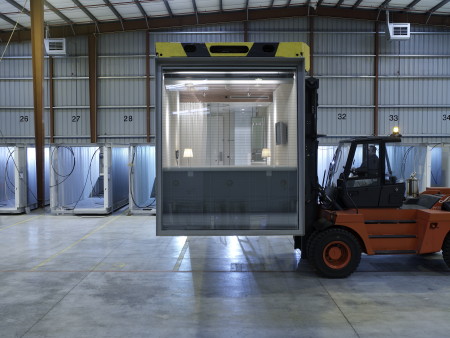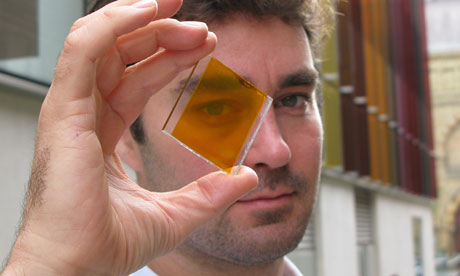30 September 2013
29 September 2013
28 September 2013
Casa Chiara by Michelle Kaufmann
Link 1_Project info: http://michellekaufmann.com/2010/05/casa-chiara-project-info/
Link 2_Off-site construction: http://michellekaufmann.com/2010/05/casa-chiara-factory-construction/
Link 3_On-site building assembly: http://michellekaufmann.com/2009/08/another-day-another-8-modules-get-set/
27 September 2013
25 September 2013
24 September 2013
23 September 2013
22 September 2013
"Originality consists in returning to the origin, therefore, original is something that goes back to the simplicity of the first solutions."
Antoni Gaudí
21 September 2013
20 September 2013
19 September 2013
18 September 2013
Earthquake-proof passive house by Pierluigi Bonomo
Link: http://www.treehugger.com/green-architecture/energy-box-earthquake-proof-passive-house-built-cross-laminated-timber.html
Images: http://www.archilovers.com/p40980/i259708/stato-post-sisma-del-vecchio-edificio
16 September 2013
15 September 2013
The future of Solar Glass
A solar power company capable of "printing" colourful glass that can generate electricity from the sun's energy announced a £2m funding boost on Tuesday.
Oxford Photovoltaics, a spin-off from the University of Oxford, said the investment from clean-tech investors MTI Partners will help its solar glass, which can be dyed almost any colour, take a step closer to the commercial market.
"What we say here is rather than attach [solar] photovoltaics to the building, why not make the building the photovoltaics?" Kevin Arthur, the company's founder and CEO, told the Guardian. "If you decide to build a building out of glass, then you've already decided to pay for the glass. If you add this, you're adding a very small extra cost. [The solar cell treatment] costs no more than 10% of the cost of the facade."
These generally cost between £600 and £1,000 per square metre, meaning the new cell treatment wouild cost just £60-£100 extra per square metre.
The technology works by adding a layer of transparent solid-state solar cells at most three microns thick to conventional glass, in order to turn around 12% of the solar energy received into low-carbon electricity. The power can then be exported to the national grid or used for the running of a building.
"Within reason we can print any colour, there's a wide range of dyes, blues and greens and reds and so on. But different colours have different efficiencies: black is very high, green is pretty good and red is good, but blue is less good," said Arthur.
The £2m investment will pay for equipment and recruiting staff for the company's new base on the Begbroke Science Park near Oxford. The company is looking to build a much larger manufacturing facility next year, with full size panels available for sampling and trials at the end of 2014. A4-sized samples will be ready by the end of 2013. While the company is mostly targeting customers planning new buildings, it also "very interested" in retrofits on the facades of existing buildings.
Separately, a team at the University of Sheffield and University of Cambridge this week said they had succeeded in developing a process to 'spray paint' solar cells on to surfaces and, potentially in the future, roofs and buildings. The teams believe the process could significantly cut the cost of solar in the future, but currently only works on "very smooth" surfaces and is less efficient than conventional solar panels.
Professor David Lidzey from the University of Sheffield said: "Spray coating is currently used to apply paint to cars and in graphic printing. We have shown that it can also be used to make solar cells using specially designed plastic semiconductors. Maybe in the future surfaces on buildings and even car roofs will routinely generate electricity with these materials."
Solar power worldwide reached 100GW installed capacity last year for the first time, up from 71GW in 2011 and just 40GW in 2010, according to recent trade body figures.
Link: http://www.theguardian.com/environment/2013/feb/12/printed-solar-glass-panels-oxford-photovoltaics
Link: http://www.theguardian.com/environment/2013/feb/12/printed-solar-glass-panels-oxford-photovoltaics
14 September 2013
13 September 2013
Industrialized house by Foraster Arquitectos & DECONS
The 10th of september an industrialized single-family house was built in Mungia ( Spain ) in 8 hours. The house was developed by Foraster Arquitectos and DECONS.
Link: http://www.forasterarquitectos.com/blog/las-casas-industrializadas-en-los-medios-ii
11 September 2013
The Pros and Cons of Cargo Container Architecture by Brian Pagnotta
Interesting reflexion about the sense of using containers in architecture, based in location or in the amount of energy necessary to make them habitable.
El Espinar House by Miguel de Guzmán
El Espinar House is built in a small village at the north face of the Sierra de Madrid. The site enjoys a privileged location, on the edge of the town bordering the Natural Park Panera.This situation is the starting point of the project, with the goals of maximizing the mountain and park views to the northwest; optimizing natural light considering it is at the north face of the mountain, and respecting the existing large pines. The dwelling is located in the center of the lot with a perimeter defined by urban legal conditions as well as the situation of the trees. The facade consists of a triple skin: First there is a sandwich panel with OSB boards (which provide the interior finish), extruded polystyrene foam insulation and waterproof chipboard, surrounding the core of the house rooms and living spaces. The second skin is made of cellular polycarbonate, providing extra insulation and expanding the perimeter to wrap a south-facing greenhouse that collects heat during winter days and can be opened to the outside during the summer, defining semi-outdoor extension space for the house. Steel cables allow climbing plants to grow on three sides of the house, as a vegetal third skin. The use of semi mechanized building techniques, steel frames, sandwich panels and polycarbonate, can speed up work time, reduce costs and give the building greater flexibility to make changes in the future.Water and electrical facilities are accesible, making easier to expand, change or perform repairs.The top deck area is a garden that tries to restore the portion of ground garden occupied by the building and provides a leisure space at the level of the treetops with views of the mountains.
Link: http://www.imagensubliminal.com/content/obra/el-espinar
Etiquetas:
Dwelling,
Fast construction,
Housing,
Sandwich panels,
Steel
Subscribe to:
Posts (Atom)

















